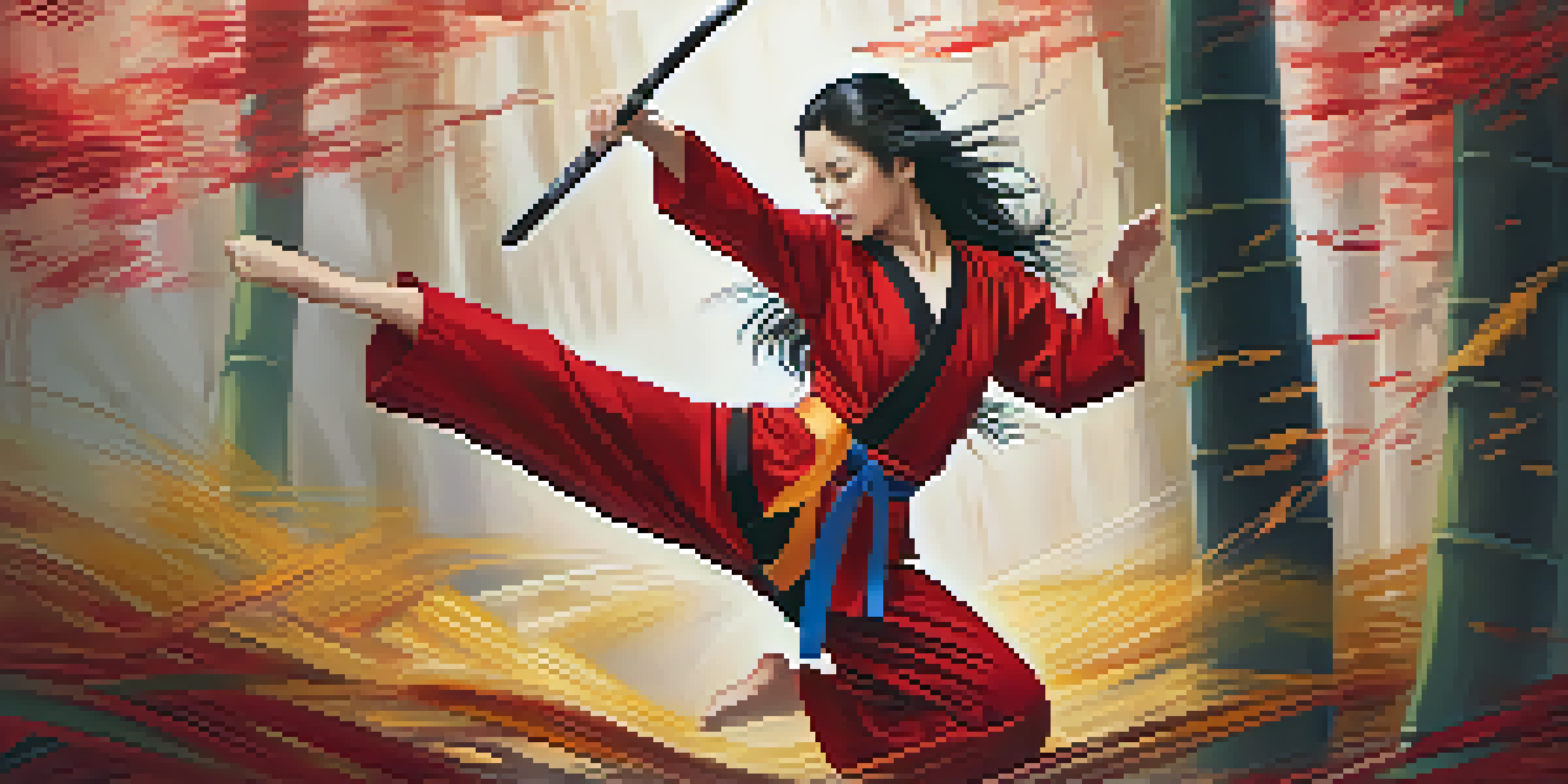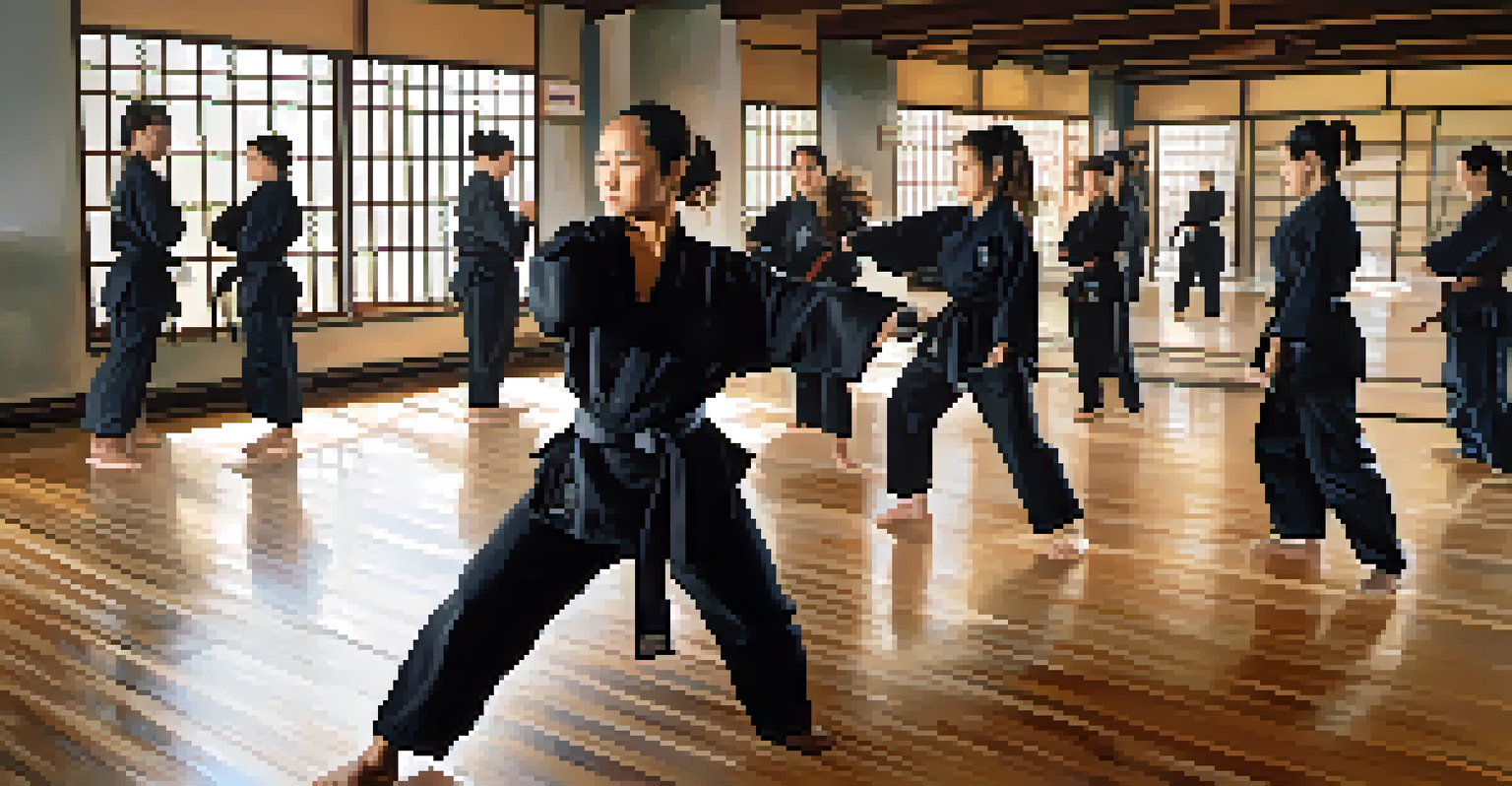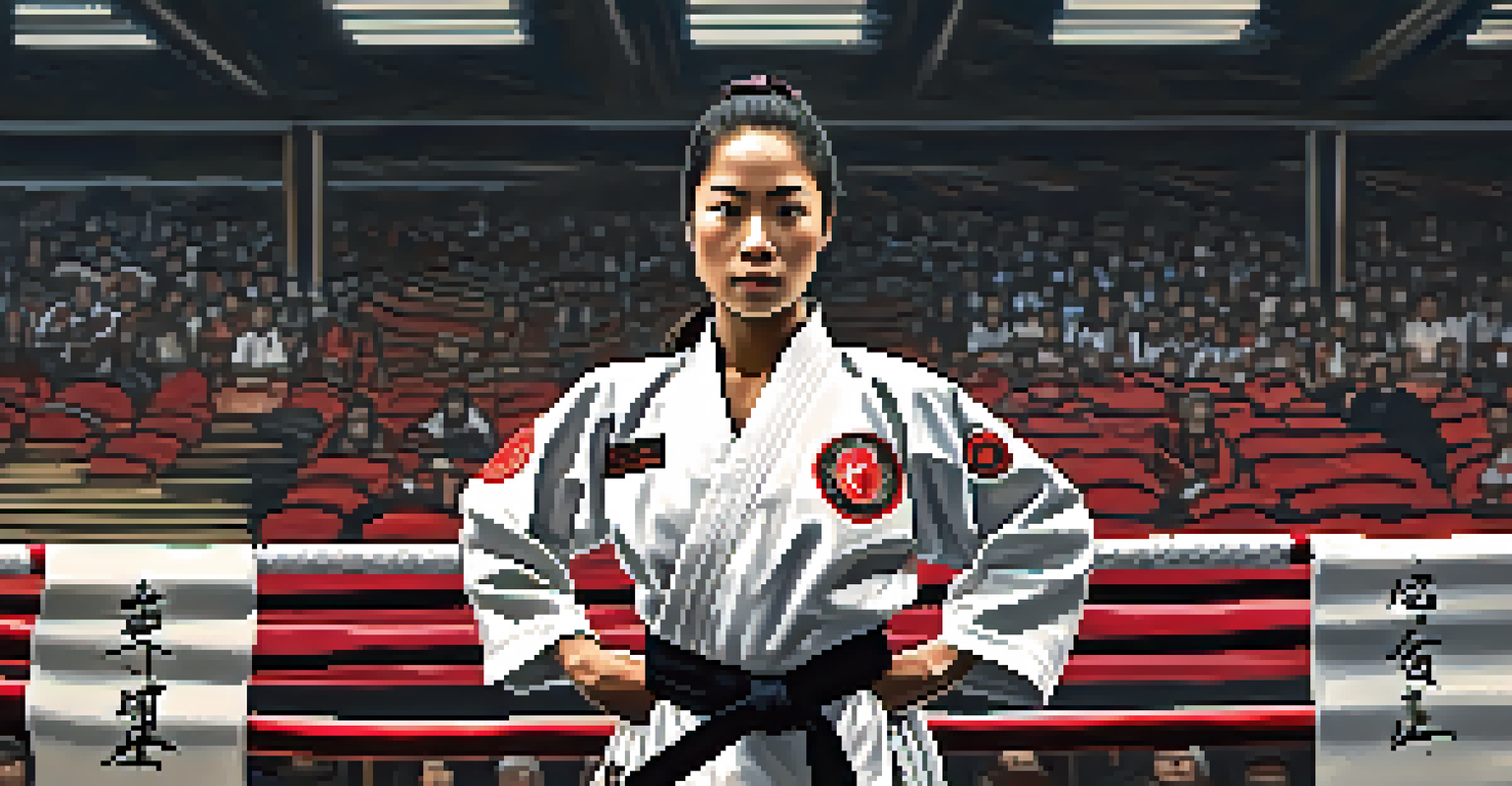Martial Arts and the Rise of Female Protagonists in Film

The Evolution of Female Characters in Martial Arts Films
Traditionally, martial arts films have showcased male heroes, with women often relegated to supporting roles. However, over the years, there's been a significant shift as filmmakers recognize the potential of strong female leads. This evolution reflects a broader cultural change, where women are no longer just sidekicks but central figures in action narratives.
The only way to deal with the future is to function efficiently in the now.
Films like 'Crouching Tiger, Hidden Dragon' and 'Kill Bill' have paved the way for female protagonists to take center stage. These characters are not only skilled fighters but also complex individuals with their own stories to tell. This shift has empowered a generation of women, both on-screen and off, to embrace strength and resilience.
As audiences have become more receptive to diverse storytelling, the rise of female martial artists in film has opened the door for more nuanced portrayals. From graceful movements to fierce battles, these characters embody a blend of femininity and ferocity, reshaping the perception of women in action cinema.
Cultural Influences on Female Martial Artists in Film
The cultural background of a film often plays a crucial role in shaping its characters. In many Asian cultures, martial arts are deeply rooted, and women have historically participated in these disciplines. Films that draw from these traditions, like 'The Bride with White Hair,' showcase female protagonists who are as skilled, if not more so, than their male counterparts.

In Western cinema, the rise of female martial artists has been influenced by feminist movements that advocate for equality and representation. Movies like 'Wonder Woman' and 'Atomic Blonde' highlight women who are not just fighting for survival but also for justice and empowerment. These narratives resonate with audiences seeking inspiration and strength in their heroines.
Empowerment of Female Protagonists
Martial arts films have shifted from male-dominated narratives to featuring strong female leads, showcasing their complexity and resilience.
Moreover, the blend of cultural influences enables filmmakers to create unique characters that resonate globally. As these stories gain traction, they pave the way for future films to explore even more diverse representations of women in martial arts.
Iconic Female Martial Artists: Pioneers of Change
When discussing female protagonists in martial arts, it's impossible not to mention iconic figures like Michelle Yeoh and Uma Thurman. Yeoh, with her incredible agility and grace, has redefined action roles, proving that women can be as formidable as their male counterparts. Her performances in films like 'Tomorrow Never Dies' and 'Crouching Tiger, Hidden Dragon' have set a high standard for female action stars.
Women are the largest untapped reservoir of talent in the world.
Similarly, Uma Thurman's portrayal of The Bride in 'Kill Bill' has become a cultural touchstone for female empowerment in action cinema. Her character’s journey is one of vengeance and self-discovery, showcasing the multifaceted nature of female protagonists. This kind of representation encourages women to see themselves as powerful leaders and fighters.
These pioneering actresses not only inspire audiences but also open doors for future generations of female martial artists in film. Their influence extends beyond the screen, motivating young girls to pursue martial arts and challenge societal norms.
The Impact of Training and Authenticity on Characters
Training and authenticity are crucial components in portraying female martial artists convincingly. Many actresses invest considerable time into martial arts training to bring realism to their roles. For instance, actresses like Kate Beckinsale and Charlize Theron have undergone rigorous training for films like 'Underworld' and 'Mad Max: Fury Road,' respectively.
This dedication not only enhances the believability of their performances but also sets a precedent for future filmmakers to prioritize authenticity. Audiences appreciate seeing skilled fighters, and this realism adds depth to the characters. When actresses embody their roles, it fosters a connection with viewers, making the action sequences even more engaging.
Cultural Influences Shape Characters
Cultural backgrounds enrich female martial artists' portrayals, allowing for diverse representations and resonant storytelling.
The focus on training also highlights the importance of physicality in storytelling, allowing female protagonists to demonstrate strength and skill in a way that resonates with audiences. It's a testament to the growing acknowledgment that women can be just as powerful and capable as men in martial arts.
The Role of Storytelling in Shaping Female Protagonists
Storytelling plays a pivotal role in how female protagonists are portrayed in martial arts films. Successful narratives often explore themes of empowerment, resilience, and self-discovery, allowing these characters to grow beyond their fighting abilities. For example, in 'Mulan,' the central character’s journey is not just about combat but also about honor and identity.
Great storytelling also allows for character development, transforming them from mere fighters to relatable individuals with dreams and fears. This depth enriches the viewing experience and makes audiences more invested in their journeys. The emotional stakes elevate the action, creating a more compelling narrative.
As filmmakers continue to prioritize storytelling, we can expect to see even more complex female characters in martial arts. This shift not only entertains but also inspires viewers, demonstrating that strength comes in many forms.
Audience Reception: Embracing Female Leads in Action
The audience's response to female protagonists in martial arts films has evolved significantly. Initially, some viewers may have been skeptical about women taking on lead roles in action-packed narratives. However, as films featuring strong female characters have gained popularity, audiences have embraced these stories wholeheartedly.
Movies like 'Wonder Woman' and 'Black Widow' have shattered box office records, proving that female-led action films are not just viable but highly successful. This acceptance reflects a growing recognition of the importance of diverse representation in film, and audiences are eager for stories that reflect their experiences.
Authenticity Enhances Character Depth
Actresses' dedication to training adds realism to their roles, fostering a connection with audiences and elevating female characters in action.
This shift in audience perception also encourages filmmakers to continue developing strong female leads. As more stories celebrate women in martial arts, it creates a positive feedback loop, inspiring even more female-driven narratives in the future.
Future Trends: What’s Next for Female Martial Artists in Film?
Looking ahead, the future appears bright for female martial artists in film. With the success of recent titles, filmmakers are increasingly willing to take risks on female-led projects. This trend suggests that we will continue to see a diversification of characters and stories that push the boundaries of traditional narratives.
Moreover, the rise of streaming platforms has opened up new opportunities for storytelling, allowing for a broader range of content that focuses on female protagonists. Shows like 'Warrior Nun' and 'The Old Guard' highlight the potential for serialized storytelling centered around strong women, further expanding the genre.

As more creators are inspired by the success of female-led martial arts films, audiences can expect to see innovative stories and dynamic characters that redefine the action genre. This evolution not only enriches the cinematic landscape but also empowers future generations of women in martial arts.